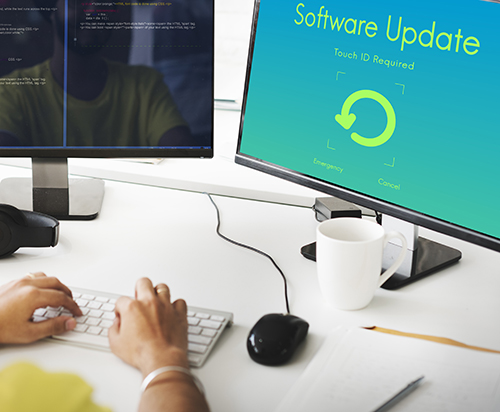Patch management is a critical aspect of maintaining the health, security, and performance of both operating systems and software applications. In an era where cyber threats are increasingly sophisticated and frequent, ensuring that all systems and applications are up-to-date with the latest patches is more important than ever.
The Importance of Patch Management
Patch management involves the process of identifying, acquiring, testing, and installing patches (small code updates) to software and operating systems. These patches are designed to fix vulnerabilities, improve functionality, and enhance performance. Here are several reasons why patch management is crucial:
Enhancing Security
One of the primary reasons for implementing patch management is to enhance security. Cyber attackers often exploit vulnerabilities in operating systems and software to gain unauthorised access, steal sensitive data, or deploy malicious software. Regularly applying patches helps to close these security gaps, making it significantly harder for cybercriminals to execute successful attacks.
Ensuring Compliance
Many industries are subject to regulatory requirements that mandate the regular updating of software and operating systems to protect sensitive data. Failure to comply with these regulations can result in severe penalties, legal repercussions, and damage to an organisation’s reputation. Effective patch management ensures that systems remain compliant with industry standards and regulations.
Improving System Performance
Patches frequently include enhancements and bug fixes that improve the performance of software and operating systems. By keeping systems updated, organisations can benefit from improved functionality, increased efficiency, and a smoother user experience.
Protecting Against Downtime
Unpatched vulnerabilities can lead to system crashes or failures, resulting in costly downtime for businesses. Regular patch management helps to maintain the stability and reliability of systems, minimising the risk of unexpected disruptions and the associated financial losses.
Challenges in Patch Management
While the importance of patch management is clear, implementing an effective patch management strategy presents several challenges:
Complexity and Volume
Organisations often use a wide range of operating systems and software applications, each requiring different patches. The sheer volume of patches that need to be managed, combined with the complexity of ensuring compatibility across various systems, can be overwhelming.
Timing and Coordination
Applying patches requires careful timing and coordination to avoid disrupting business operations. Scheduling patches during maintenance windows and ensuring that all systems are updated simultaneously can be challenging, especially for organisations with distributed or remote workforces.
Testing and Validation
Before deploying patches, it is essential to test them to ensure they do not introduce new issues or conflicts. This testing process can be time-consuming and resource-intensive, particularly for organisations with limited IT staff.
Keeping Track of Updates
Staying informed about the latest patches and updates released by software vendors is crucial. However, keeping track of these updates and ensuring they are promptly applied can be a daunting task, particularly for organisations with multiple software applications and operating systems.

The Role of Device Management Software
Effective device management software can play a vital role in addressing the challenges of patch management and ensuring that systems remain secure and up-to-date. Here’s how:
Centralised Management
Device management software provides a centralised platform for managing patches across all devices and systems within an organisation. This centralised approach simplifies the patch management process, allowing IT teams to deploy patches more efficiently and consistently.
Automated Patch Deployment
Automation is a key feature of modern device management software. Automated patch deployment eliminates the need for manual intervention, ensuring that patches are applied promptly and reducing the risk of human error. Automation also allows IT teams to schedule patch deployments during maintenance windows, minimising the impact on business operations.
Comprehensive Reporting and Compliance
Device management software offers comprehensive reporting capabilities that provide visibility into the patch status of all systems and devices. This visibility is essential for ensuring compliance with regulatory requirements and for identifying any systems that may be at risk due to missing patches. Regular reports also help organisations demonstrate their commitment to security and compliance to stakeholders.
Testing and Validation
Advanced device management software often includes features for testing and validating patches before deployment. These features help to identify potential issues and conflicts, allowing IT teams to address them proactively. By ensuring that patches are thoroughly tested, organisations can avoid the risk of introducing new problems when updating systems.
Keeping Track of Updates
Device management software can automatically track and notify IT teams of new patches and updates released by software vendors. This proactive approach ensures that organisations stay informed about the latest security vulnerabilities and enhancements, allowing them to respond quickly and effectively.
Conclusion
In conclusion, patch management is an essential component of maintaining the security, compliance, performance, and reliability of both operating systems and software applications. While the process can be complex and challenging, the use of effective device management software can significantly streamline patch management efforts. By leveraging the capabilities of centralised management, automation, comprehensive reporting, testing, and proactive update tracking, organisations can ensure that their systems remain secure and up-to-date, ultimately protecting against cyber threats and minimising the risk of downtime.
As cyber threats continue to evolve, the importance of a robust patch management strategy cannot be overstated. Investing in the right tools and technologies to support this strategy is crucial for safeguarding an organisation’s digital assets and ensuring long-term success.

